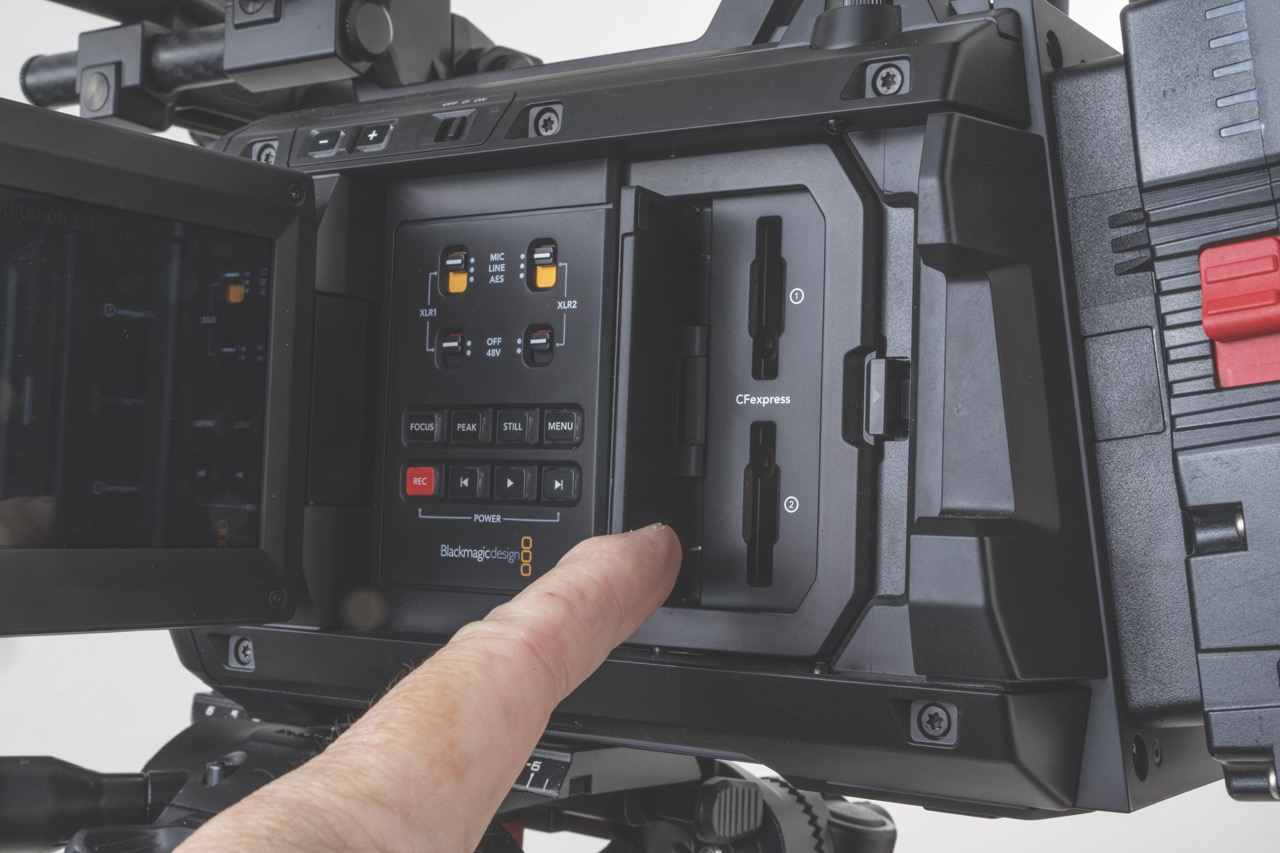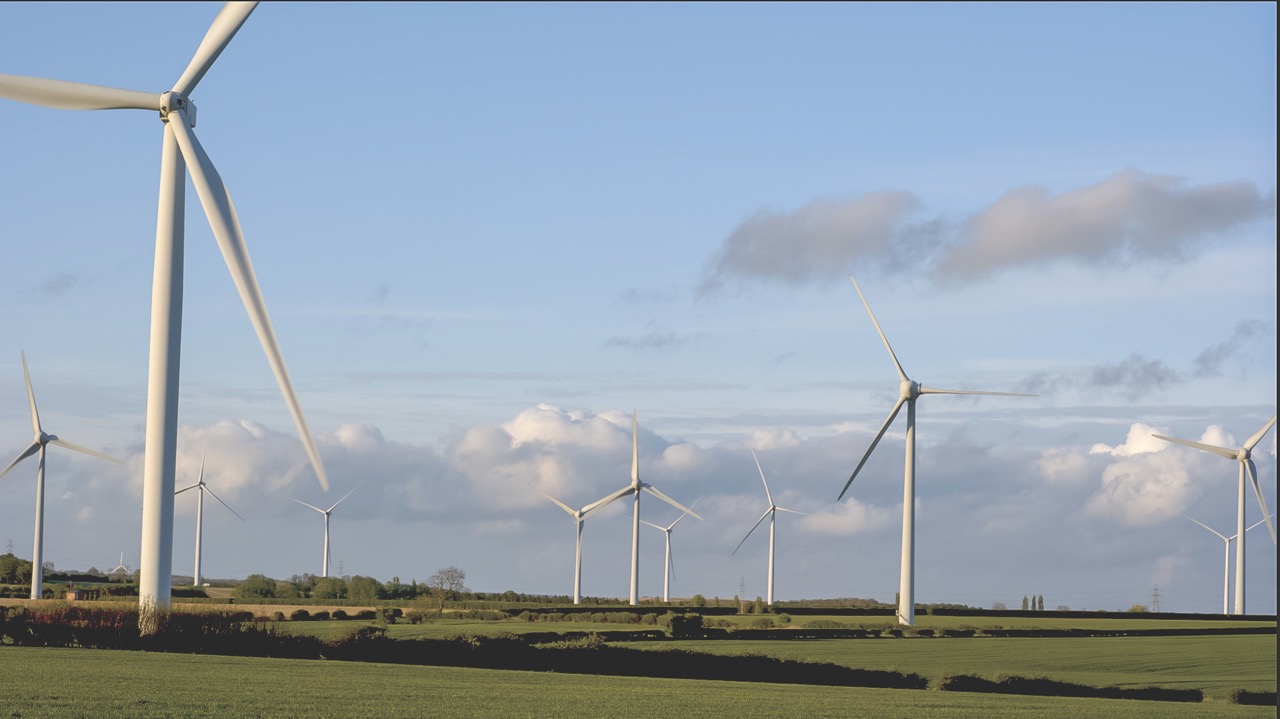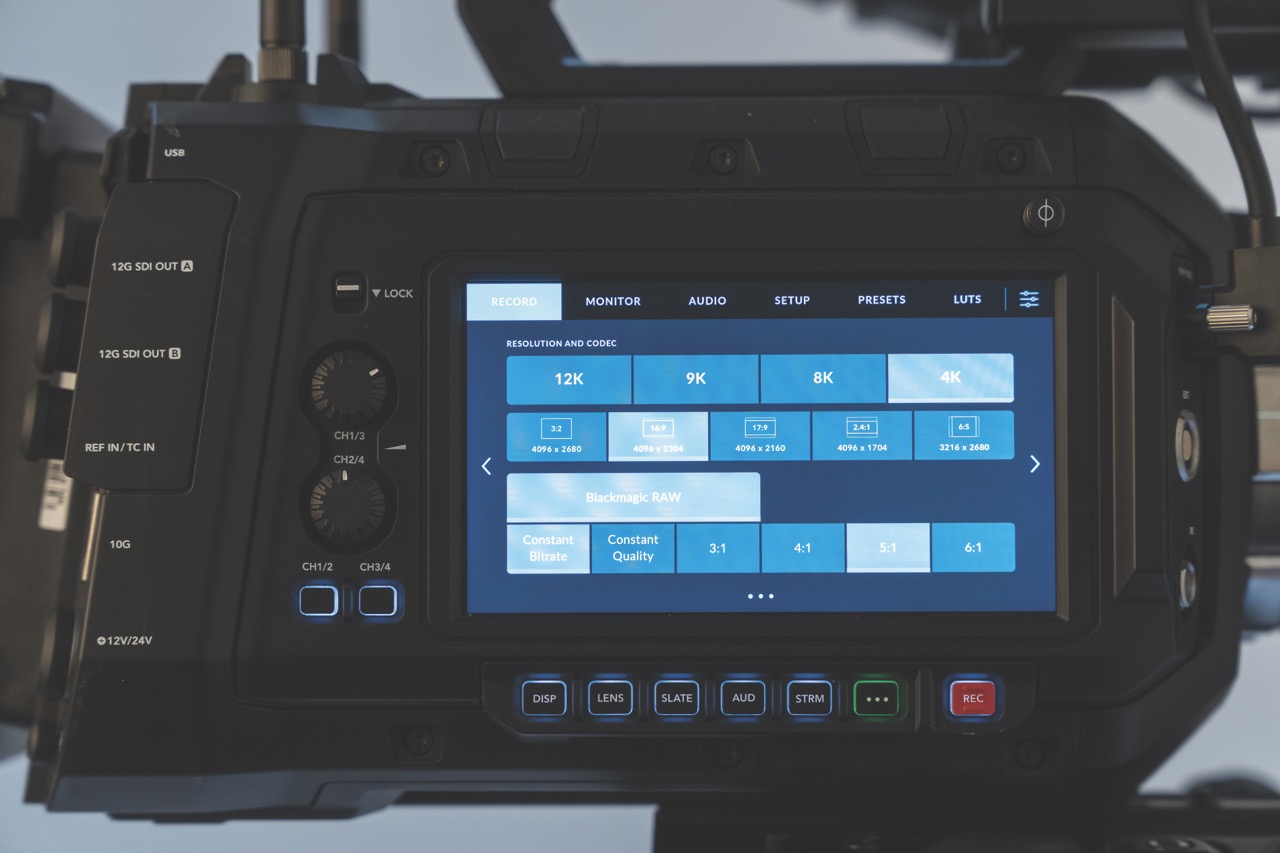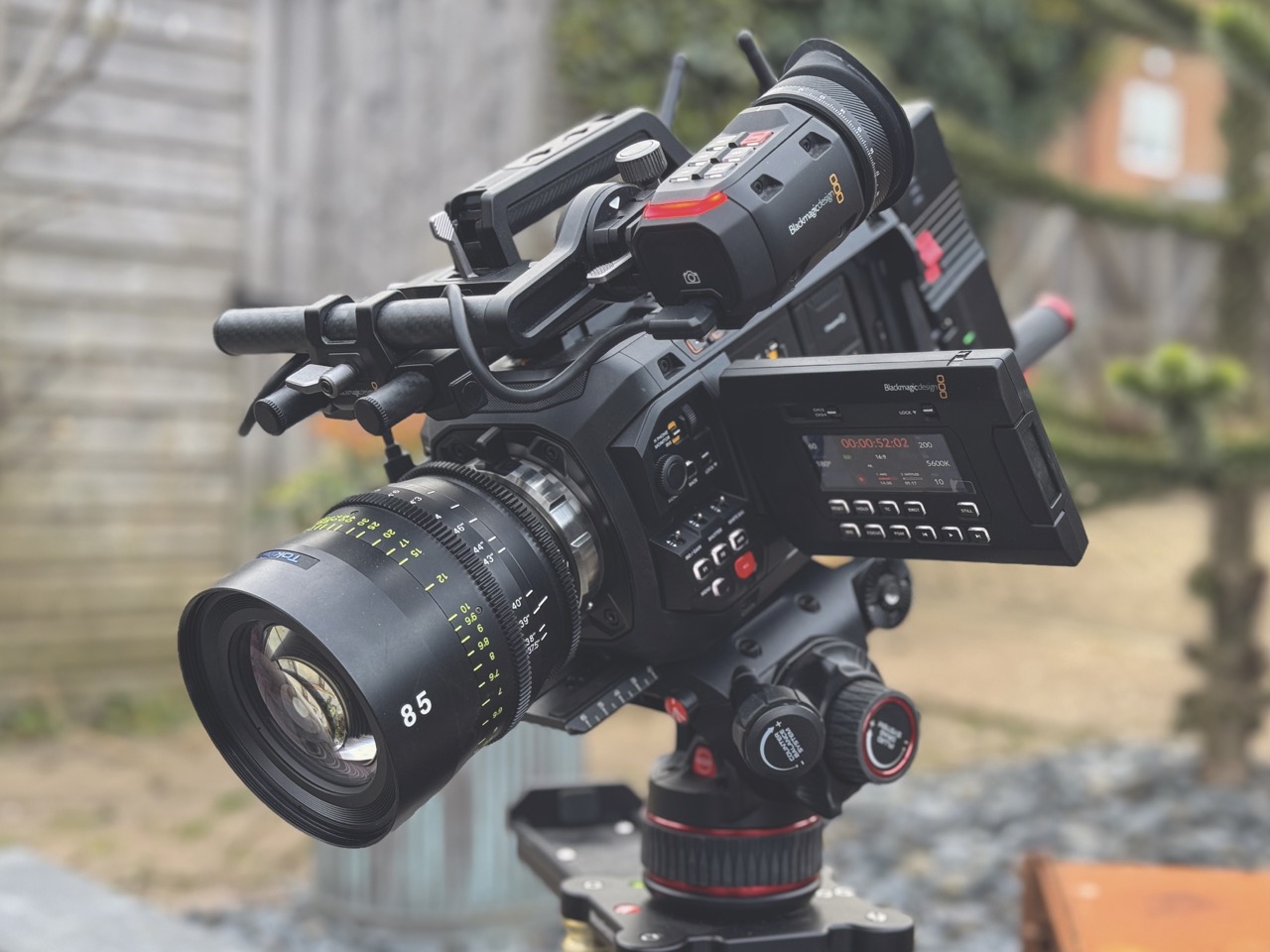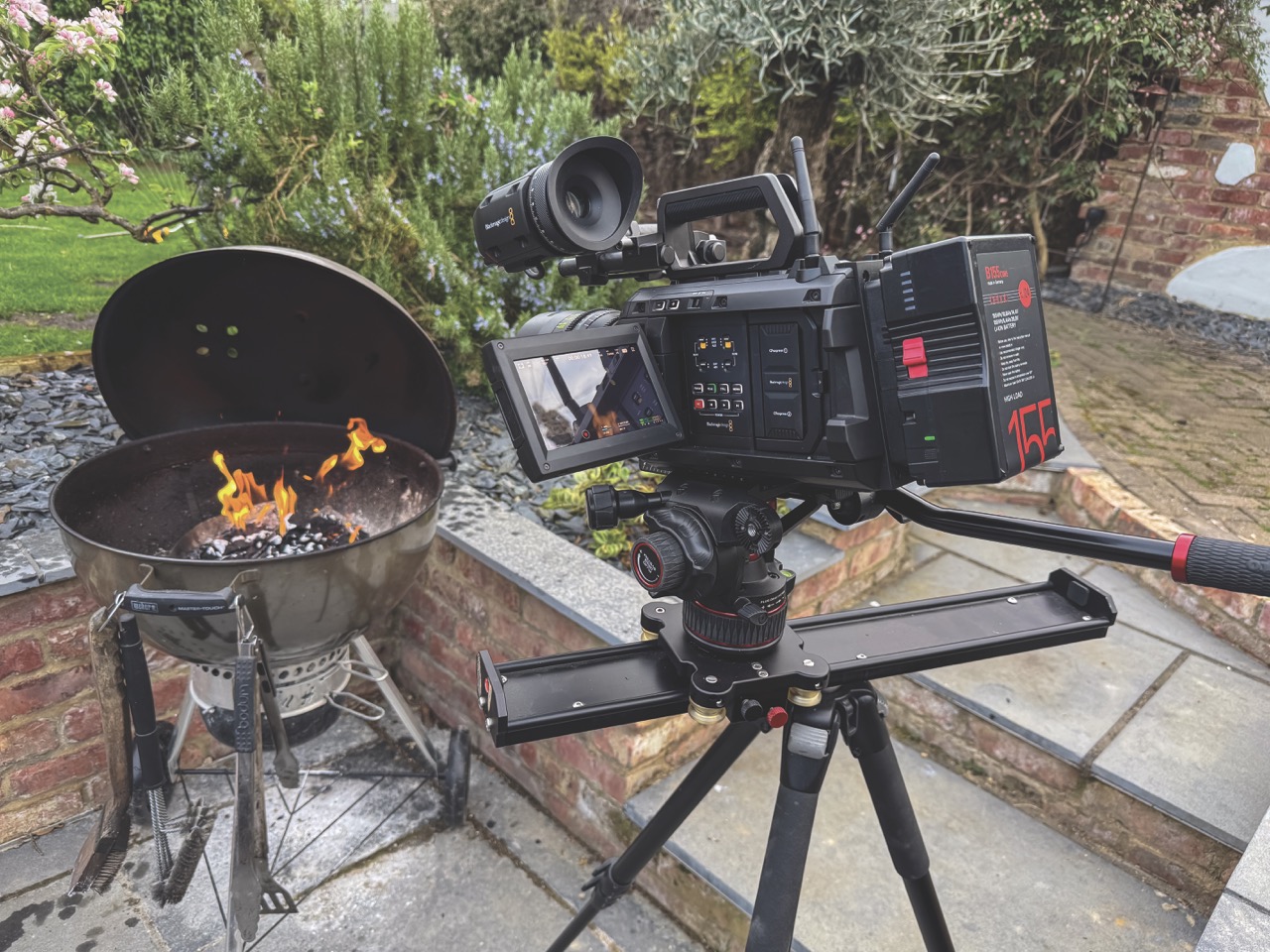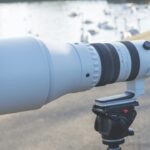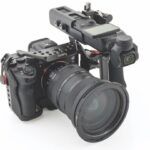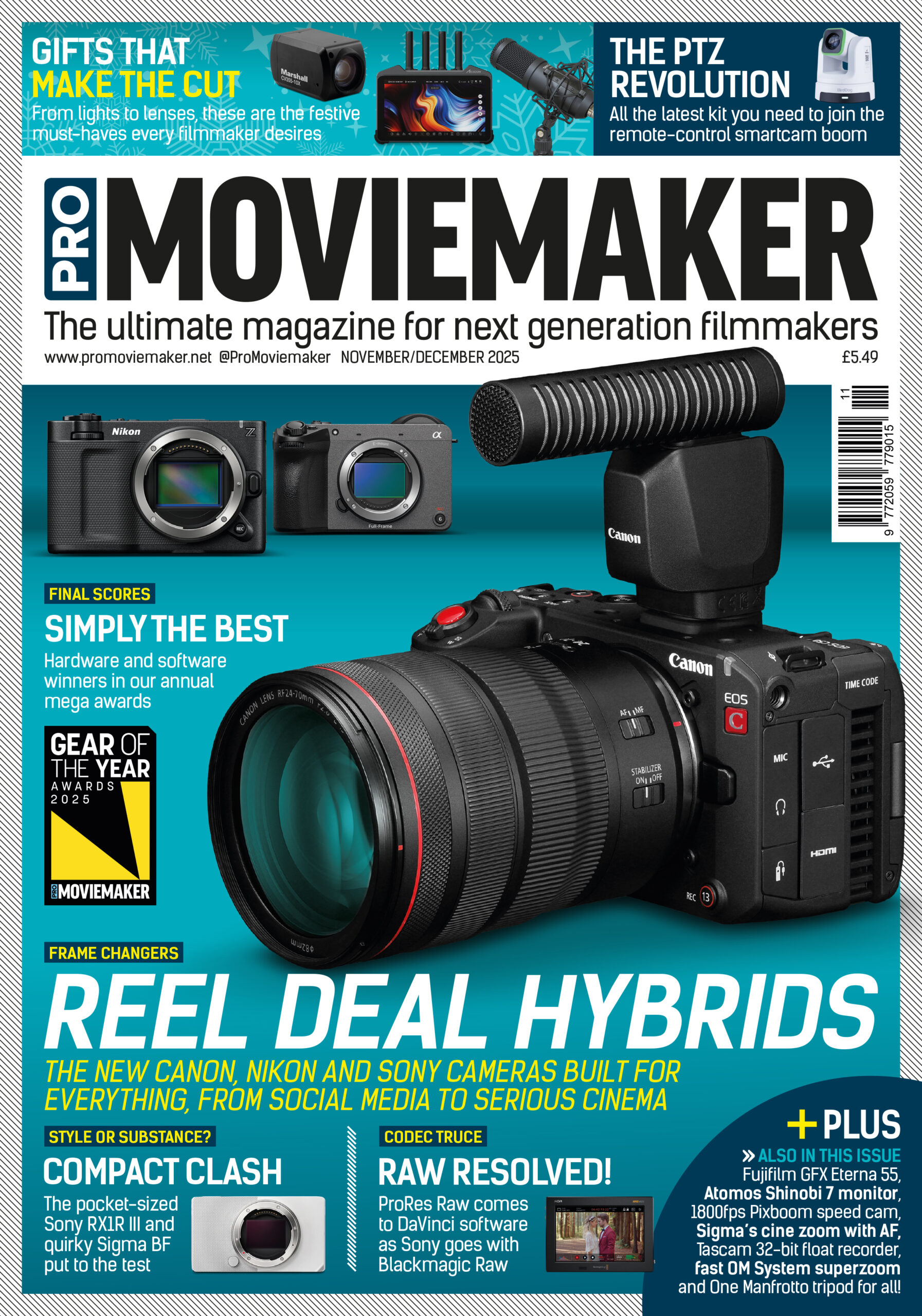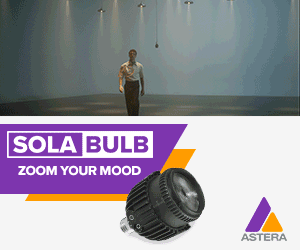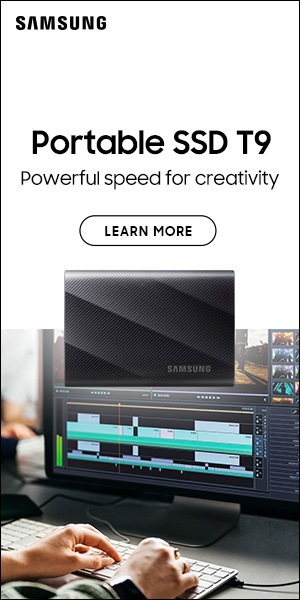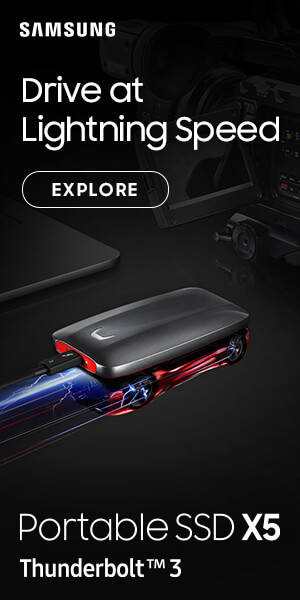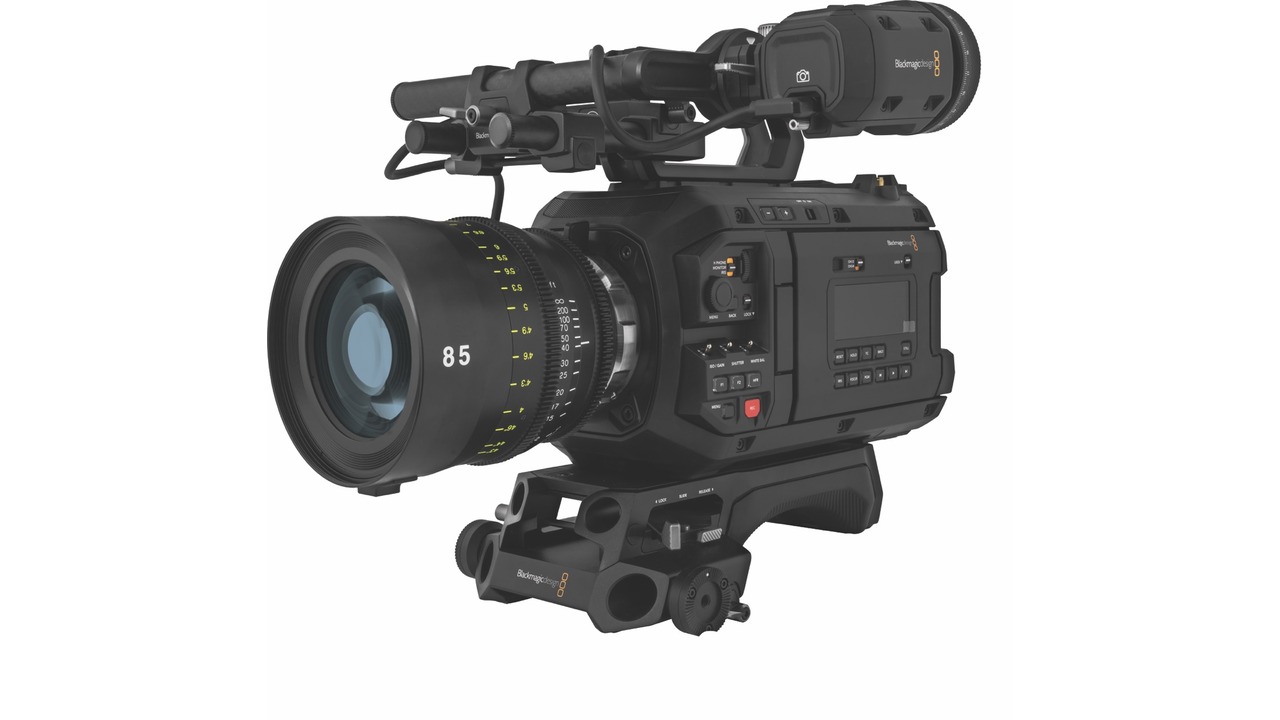
Big test: Blackmagic URSA Cine 12K LF
Posted on Jul 16, 2025 by Pro Moviemaker
The Blackmagic Ursa Cine 12K LF cinema camera punches like a beast
Words Adam Duckworth
Blackmagic Design has made a habit of innovation that disrupts the industry. With its Ursa Cine 12K LF, the Aussie company once again challenges expectations – not just of resolution, but of what a high-end digital cinema camera can offer in workflow, image quality and value. Billed as a ground-up rethink of its Ursa range, this camera is aimed squarely at professional filmmakers and cinematographers seeking the large format aesthetic and incredible resolution without sacrificing flexibility. It’s also more affordable than boutique brands like Arri or Red.
But all of a sudden, where a 12K Raw-shooting full-frame camera in a complete kit with an EVF for £15,395/$18,145 would have been massive news compared to rival offerings, there has been a lot of action in the high-end market, with more competition – and some promising better value for money.
Fujifilm has shown prototypes of its new GFX Eterna, a more compact cinema camera that uses the sensor of the GFX100 II to record 8K in 30p and 4K/60p in 4:2:2 10-bit captured internally, Full HD in 120p and has hybrid phase detection AF.
It’s the sheer size of the sensor that’s particularly impressive; the GFX has the largest area of any cine sensor at 1441 sq mm, compared to the Arri Alexa 265, which covers 1390 sq mm. It’s rumoured to have a similar price tag to the Ursa 12K LF.
Blackmagic has the newer Ursa Cine 17K with its 1183 sq mm sensor, but at more than double the price of the 12K version it veers towards the Arri and Red universe. Though a recent announcement reveals the Blackmagic Pyxis 12K cinema camera, with the 12K sensor from the Ursa Cine 12K LF, will soon be available at just £5015/$5495 in a choice of L, PL or locking EF lens mounts. This uses the same body design as the 6K Pyxis, with a 12,288×8040-pixel full-frame RGBW sensor that offers 16 stops of dynamic range, dual CFexpress media slots, 10G Ethernet and Blackmagic Cloud global sync.
For this sort of price, you must really want the larger form factor and heft of the Ursa Cine 12K LF, and have the money to pay for it.
Production ready
The Ursa Cine 12K LF is a solid camera, a complete redesign of the older Ursa built for the needs of high-end productions – its monolithic, yet modular carbon-fibre polycarbonate chassis screams cinema production. The camera feels solid, industrial and production-ready.
The camera has three high-brightness LCDs, with a large flip-out monitor on the right-hand side that has intuitive touchscreen control. The rear has another screen, and the left side of the camera holds a third large screen to give a full crew visibility of all settings at a glance.
There’s also a welcome return to clearly labelled physical buttons – a major plus for DOPs working on fast-paced shoots.
The camera is heavy, but it’s the kind of purposeful weight that makes it well balanced on large shoulder rigs and robust enough for crane or car-mount use. Thermal performance is bolstered by a new quad-fan active cooling system. The Ursa Cine 12K is made to run hard all day in hot environments without skipping a beat.
Make no mistake, the star of the show is Blackmagic’s new full-frame 36x24mm RGBW sensor. With a native resolution of 12,288×6480 pixels, it captures 12K at up to 100fps, without sensor crop. That alone sets it apart from everything else on the market – even Red’s high-end models.
Blackmagic’s custom RGBW design delivers high dynamic range, cleaner colour separation and great low-light performance, with clean shadows and good tonality even at ISO 1600. The native ISO is rated at 800, with a dual-gain architecture pushing usable range beyond that. You’re looking at 16 stops of dynamic range, which in practice means incredible retention of highlight and shadow detail.
The sensor supports full in-camera downsampling to 8K and 4K, maintaining a true large format look even when you don’t need 12K. Detail is incredible – even in crop modes. You could shoot an interview on a wide lens and punch in for close-ups without sacrificing image integrity. This could save you from needing a second body or B camera entirely.
The Ursa Cine uses Blackmagic’s Generation 5 colour science, and it’s more than just marketing hype. Skin tones are nuanced and pleasing, while colour roll-off is natural, especially in highlights. In DaVinci Resolve, the camera pairs beautifully with the workflow, allowing accurate monitoring on-set and a smooth grading experience in post.
Cinematic looks made easy
A combination of full-frame and large-aperture lenses delivers that cinematic look filmmakers are always chasing, with shallow depth-of-field, three-dimensionality and creamy bokeh. The Ursa sticks to its efficient Blackmagic Raw (BRAW) codec, which enables high-resolution capture at manageable bit rates. Multiple compression options, from Q0 to 18:1, offer flexibility for high-end finishing and proxy workflows. Colour and ISO adjustments can be made non-destructively in post using Resolve, which comes free with the camera.
This isn’t a perfect camera – and to be clear, it’s not made for casual users. File sizes in 12K are massive, even with BRAW compression. You will need a solid storage plan and fast computer to work efficiently with it. It’s not Netflix-approved yet, which might limit its usefulness for high-end streaming work.
The autofocus is minimal, but this is a camera built for use with high-end manual focus cine glass. There’s no IBIS, either, since this is a manual filmmaker’s tool through and through. Rolling shutter is low but still present, so fast whip pans or strobe-heavy scenes need thinking about. But these are known trade-offs in cameras built for deliberate, cinema-style shooting.
Storage selection
To store footage, the plug-in media module has 8TB capacity and a direct connection to Blackmagic’s Cloud Store. Or use the optional Media Module CF which has dual CFexpress slots. There’s a USB-C 3.2 port that supports direct SSD recording – and we tried out 4TB Samsung drives too, which worked perfectly.
Power comes from a B-Mount battery plate, but there are optional V-Mount and Gold Mount plates, as well as a Lemo input. The kit we used comes with a top-quality EVF and carbon-fibre rig, to not only fix it but also use as a shoulder mount.
Out of the box, the camera has a user-swappable PL mount, although Blackmagic includes both LPL and EF mounts in the package. This is more than just a nod to flexibility – it’s a forward-thinking approach to the realities of today’s lens ecosystems. The PL mount supports Cooke /i metadata, while the LPL option opens up access to Arri Signature Primes and other large format glass. Of course, if you want to use Canon L-series or Sigma Art stills lenses, you can change to EF in minutes.
The Ursa Cine 12K LF offers super-high resolution, full-frame flexibility with great colours and low noise and a modern, production-friendly design that’s ideal for cine crews. For budget-conscious owner-operators who work alone but want the amazing image quality, it might be worth hanging on for the Pyxis 12K. Either way, the 12K sensor is the star of the show.
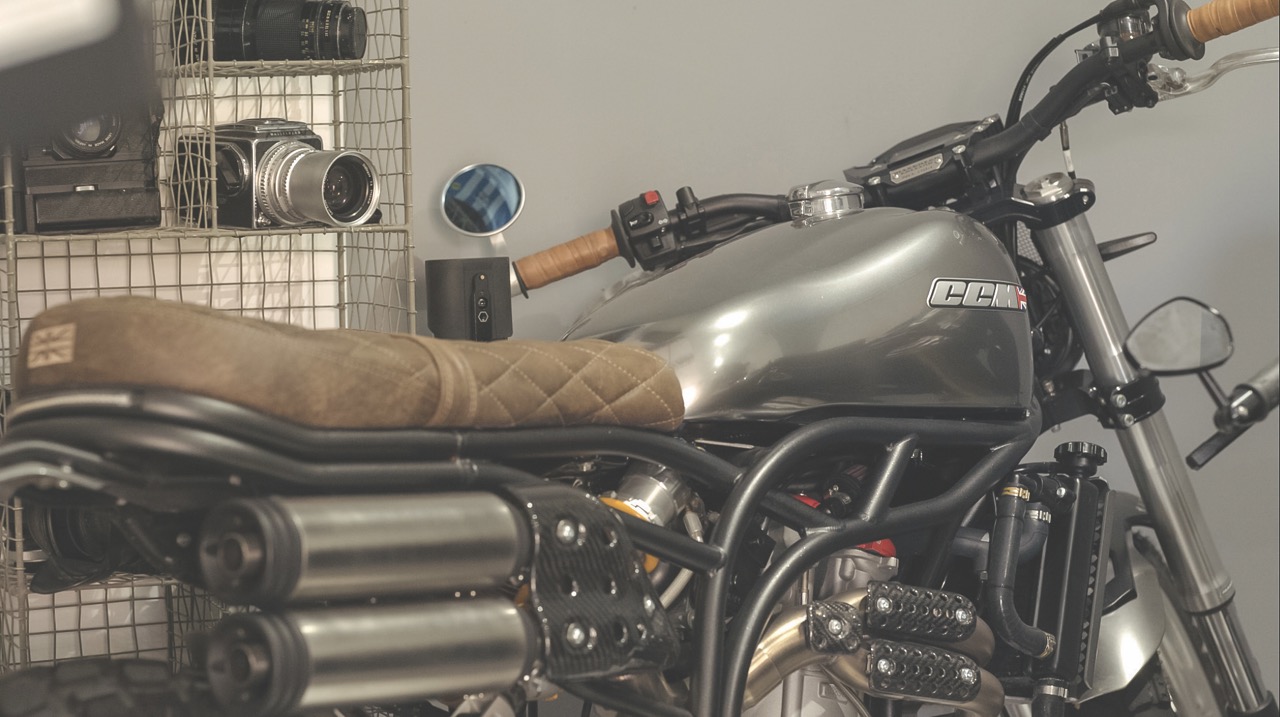
The fast and the flawless
Tokina might not be the first name that comes to mind when thinking of high-end cinema glass, but its Vista primes are becoming a serious contender. Designed from the ground up for full-frame and beyond, we tried the Ursa Cine 12K LF with the 29mm, 40mm and 85mm T1.5 trio in PL mount, and found creamy rendering with rock-solid mechanical reliability.
Just like the Blackmagic camera, all three lenses are built like tanks. They are housed in machined metal barrels with matched 114mm front diameters and consistent gear positions for fast changes on-set. The 300° focus rotation is smooth, while the consistent T1.5 aperture across the range opens up options for low-light and shallow-depth-of-field shooting.
What sets the Tokina Vistas apart is their optical personality; sharp but not clinical, with a subtle roll-off that flatters faces and preserves skin texture, leaning towards vintage softness. Wide open at T1.5, they maintain excellent contrast and sharpness even on high-resolution sensors. Stopped down, they resolve more detail with almost no breathing across the range – a huge plus for narrative and commercial work.
The 29mm offers a wide field of view that’s ideal for handheld work or shooting interiors. The 40mm, often the unsung hero of focal lengths, feels like a normal lens on full-frame; a perfect choice for dialogue scenes or intimate coverage with minimal distortion. The 85mm is a portrait powerhouse, offering compressed backgrounds and dreamy bokeh. Colour reproduction across the trio is consistent and neutral. The bokeh is round and organic thanks to the nine-blade iris, and lens flare is well controlled. There’s character here, but it’s not overbearing.
At £7498/$7499 for the widest lens, £7620/$7499 for the 40mm and £5754/$5999 for the 85mm, Tokina’s Vista primes aren’t budget glass, but compared to legacy cinema primes from Arri, Cooke or Zeiss they offer good value. The trio is a versatile kit, and well matched for easy grading in post. Tokina offers 18, 25, 35, 50, 60, 105 and 135mm options too.
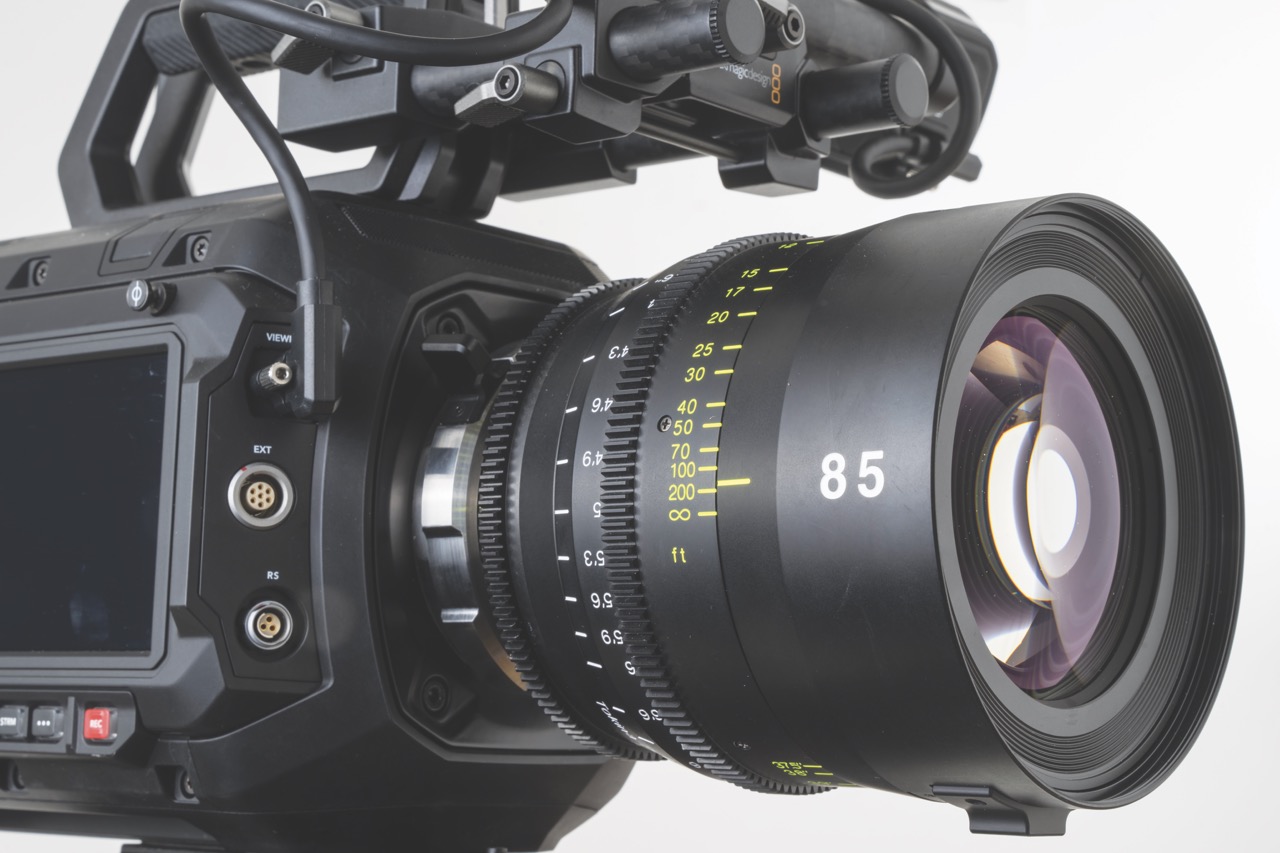
Specifications
- Price: £15,395/$18,145
- Sensor: 35.64×23.32mm full-frame CMOS, 98 megapixels, 12,288×8040
- Image stabiliser: None
- Dynamic range: 16 stops
- Lens mount: Canon EF, PL
- Monitors: Five-inch articulating touchscreen, five-inch fixed non-touchscreen
- Viewfinder: Optional
- Autofocus: Contrast detection
- ND: Built in 2-6 stops
- Recording format: Blackmagic Raw 12-bit 12K 12,288×8040 to 80fps, 12,288×6912 to 100fps, 12,288×5112 to 120fps, 9K 9648×8040 to 60fps, 9408×6264 to 100fps, 8K 8192×5360 to 144fps, 8192×3408 to 224fps, 6432×5360 to 60fps
- Connectivity: 3x USB-C, 2x BNC 12G-SDI, 2x XLR, 3.5mm stereo mic input, BNC, RJ45, 8-pin Lemo, Wi-Fi, Bluetooth, 10G Ethernet, Blackmagic Cloud sync
- IP streaming: 1920×1080/60p RTMP, SRT
- Storage: 8TB internal, M.2 SSD or 2x CFexpress Type B
- Battery: B-Mount
- Dimensions (wxhxd): 27.9×15.2×15.2cm/11x6x6in
- Weight: 3.96kg/8.72lb body only
The verdict
The Blackmagic Ursa Cine 12K LF won’t suit everyone. It demands thoughtful shooting, lots of storage and a familiarity with manual workflows. But in return, it offers cinematic imagery, incredible reframing potential and a Raw post pipeline that’s smoother than ever.
For £15,395/$18,145, just add on your glass of choice and shoot away. However, if you want the bare body with no extras, Blackmagic is now offering that for just £7014/$7695, which makes it far more affordable. Unless you really do want all the bells and whistles, it might be better to save cash and go for the à la carte option, investing in just the accessories you need.
If you want maximum image quality with minimum compromise, this is a very good camera. With internal ND filters, that interchangeable lens mount, a great EVF and dual monitors, B-Mount power and a tank-like build quality, it’s a winner.
How it rates
Features: 9
12K at 120fps Raw internal but no ProRes Raw or IS
Performance: 9
Incredible detail and frame rates
Handling: 8
Very heavy, lots of monitors are useful
Value for money: 8
A fully kitted-out 12K full-frame Raw camera at an affordable rate
Overall rating: 9/10
A 12K Raw cinema camera that’s built to last for decades
- Pros: 12K Raw, image quality, lens mount options
- Cons: Poor AF, no IBIS
This review was first published in the July/August 2025 issue of Pro Moviemaker

